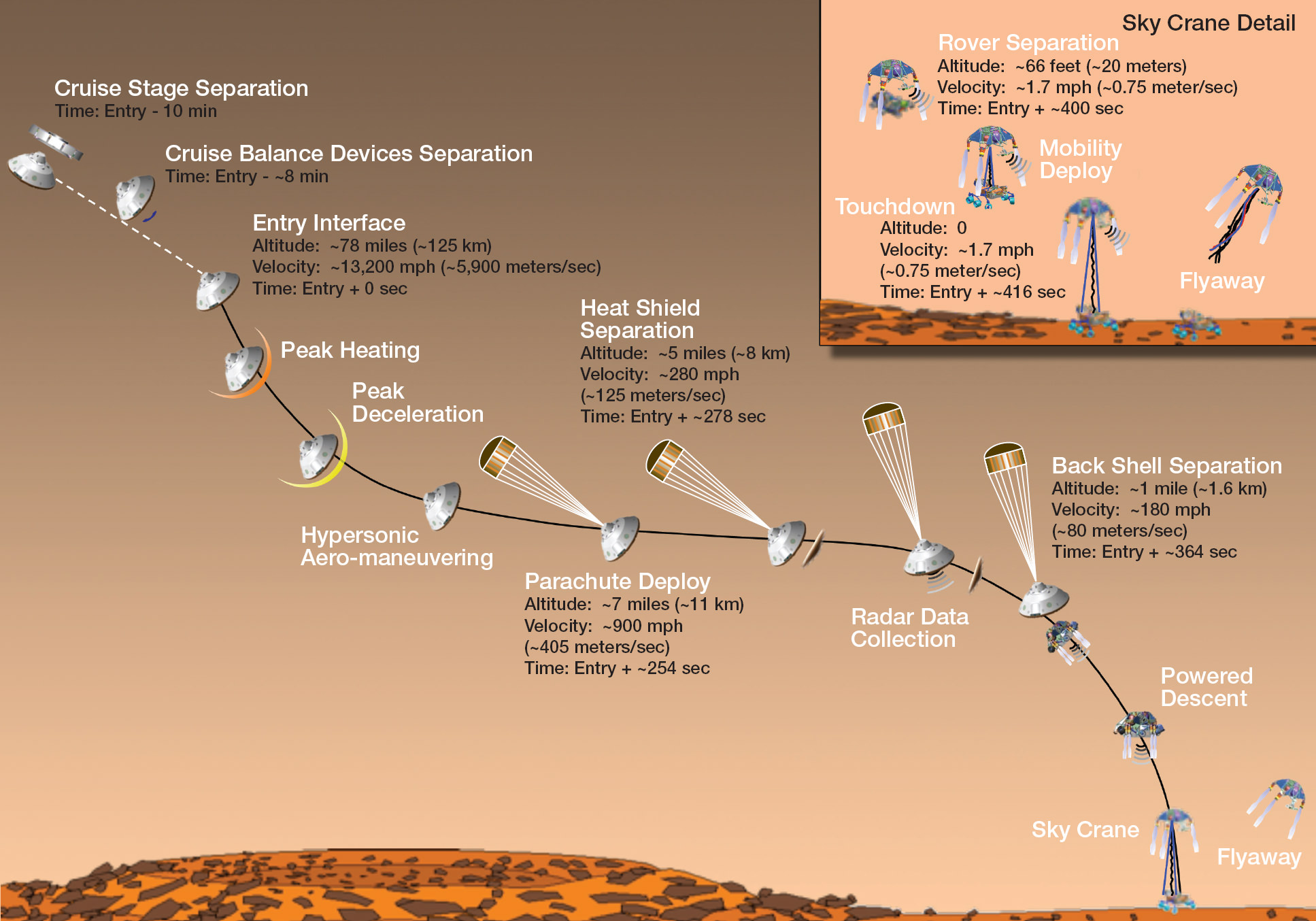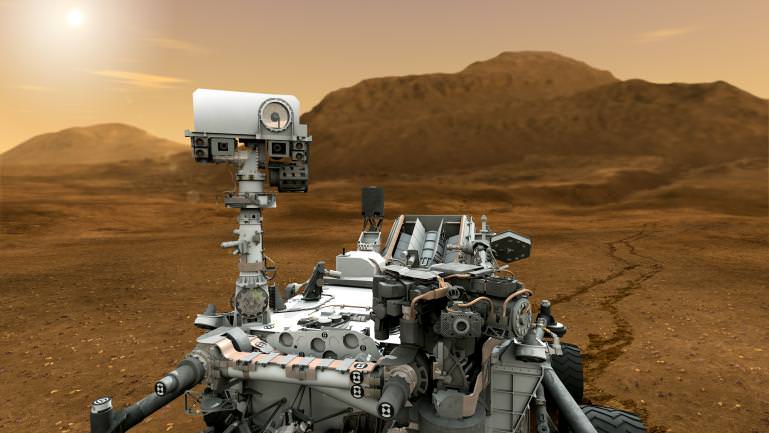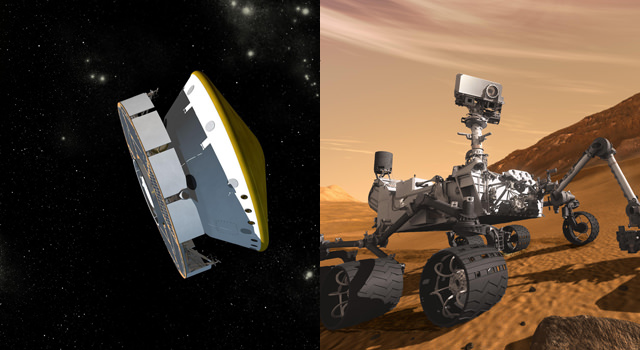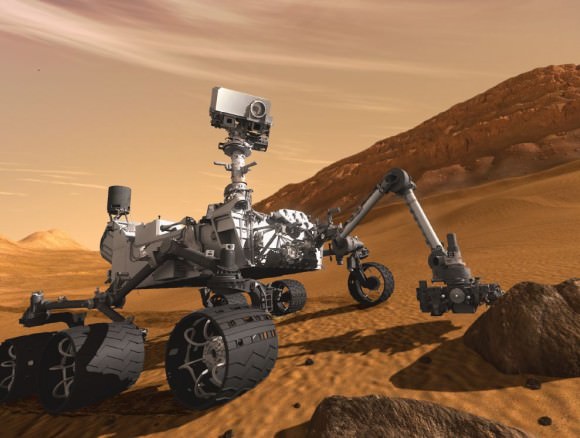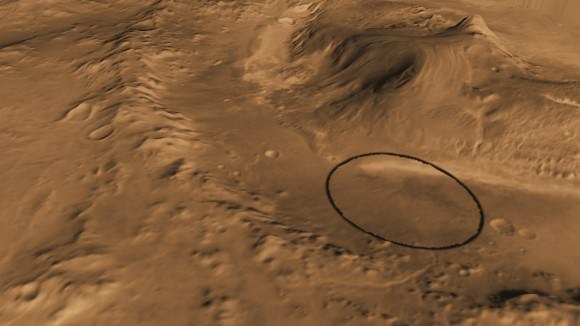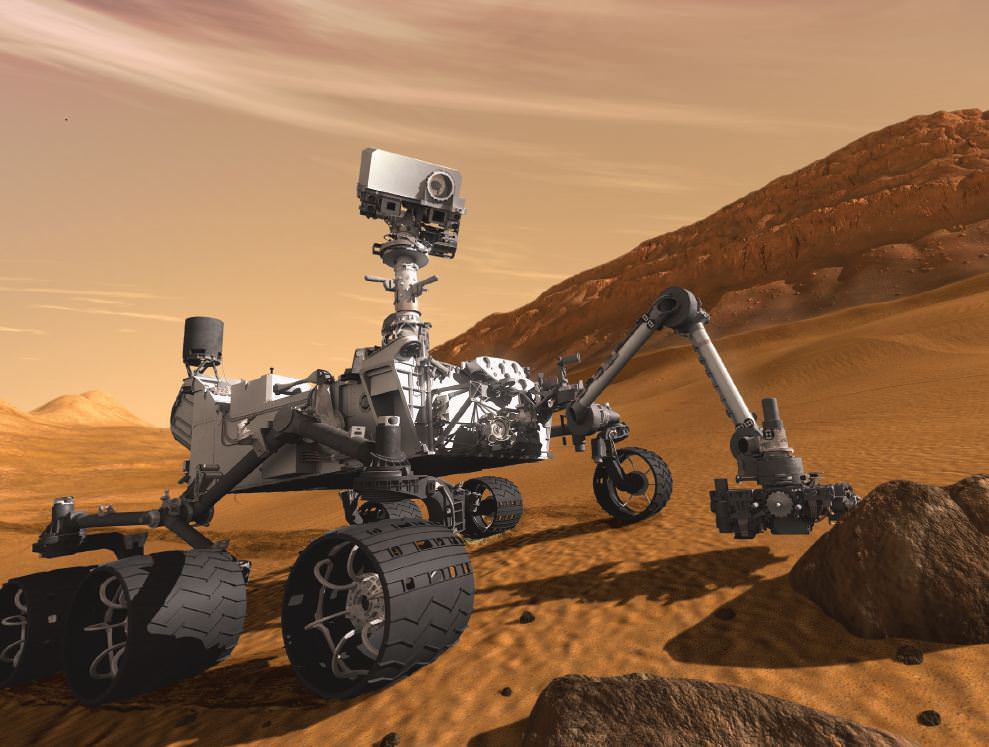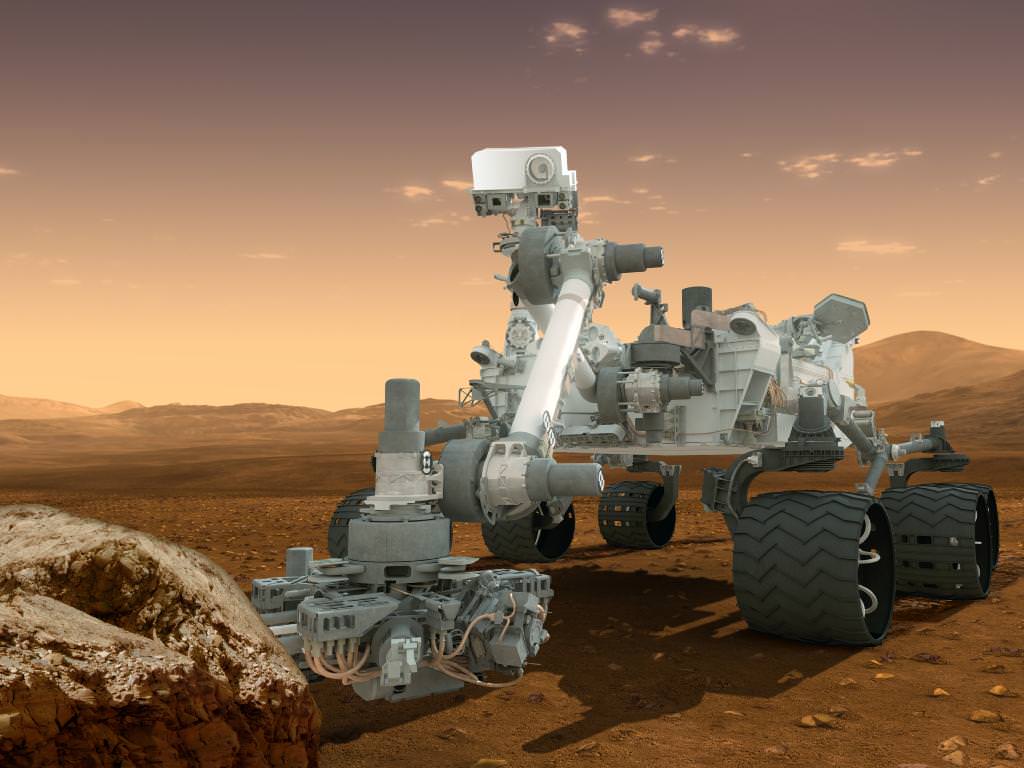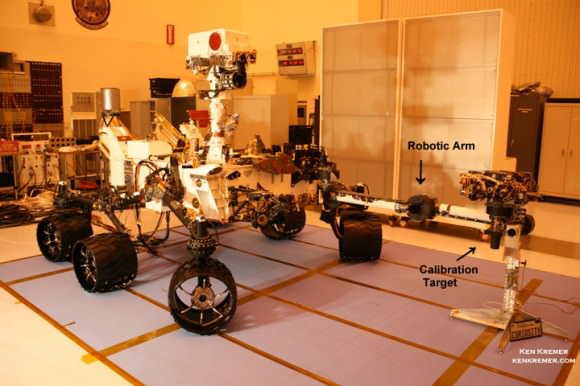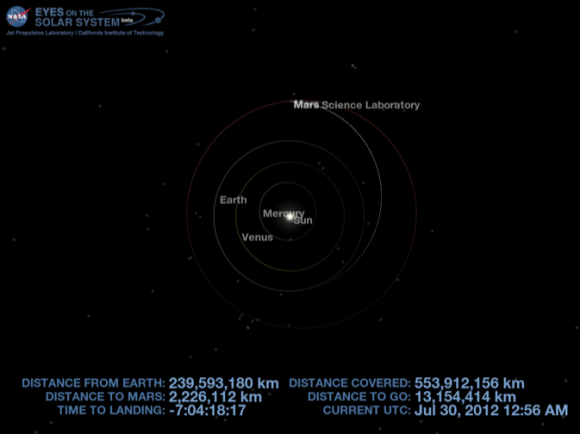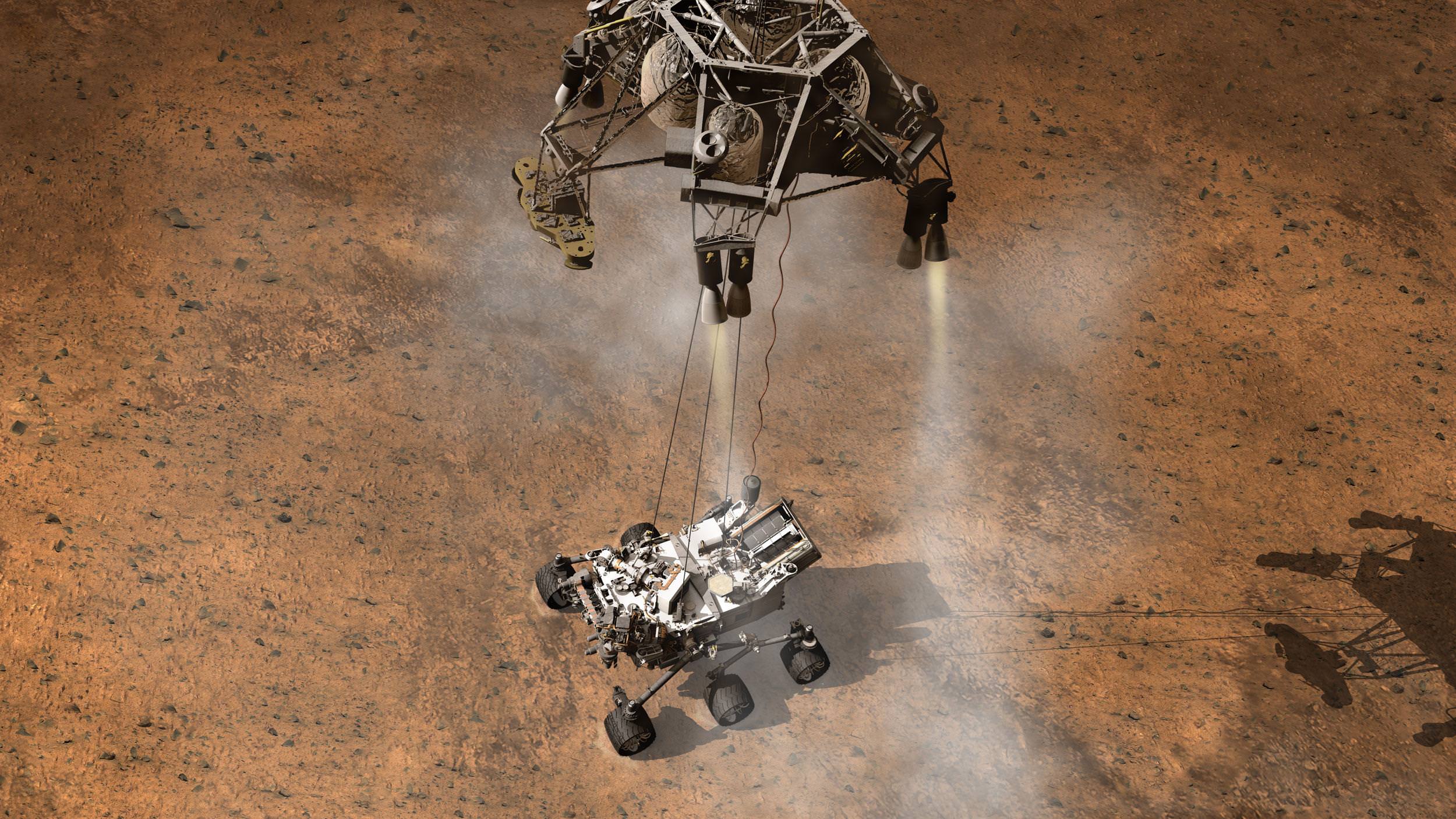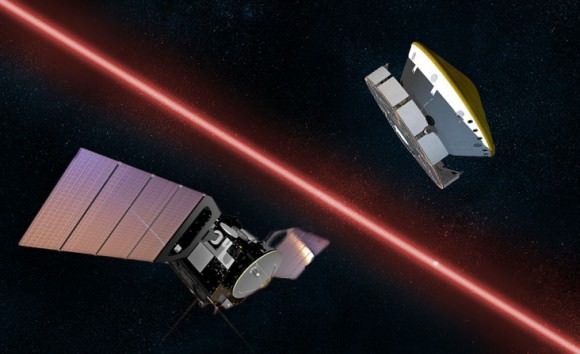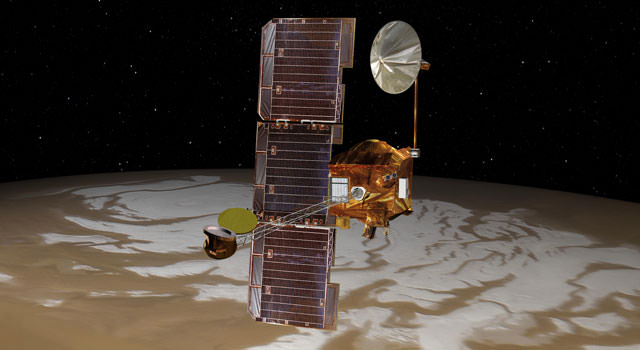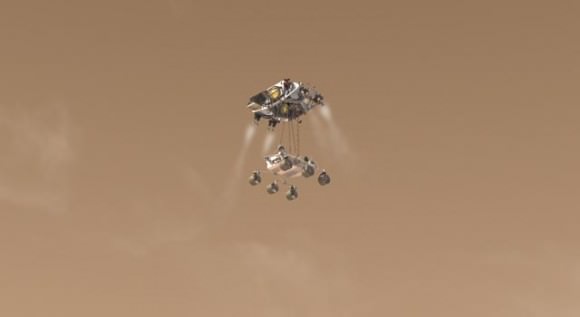Video Caption: This 11-minute animation depicts key events of how NASA’s Mars Science Laboratory mission will land the huge rover Curiosity on Mars on August 5/6, 2012. Credit: NASA
Well, here we are 3 days from the thrilling ‘touchdown’ of Curiosity on Mars on the boldest mission yet by humans to the Red Planet – Seeking Signs of Life beyond Earth!
The Curiosity Mars Science Lab rover is by far the hardest and most complex robotic mission that NASA has ever attempted. She marks a quantum leap beyond anything tried before in terms of the technology required to land this 2000 pound beast and the science she’ll carry out for a minimum 2 year prime mission.
So watch this harrowing video (above) – Outlining how Curiosity slams into the Martian atmosphere at 13200 MPH and comes to rest at 0 MPH after surviving the “7 Minutes of Terror” with an unprecedented guided entry, rocket powered descent, neck snapping supersonic parachute deployment and never before used Sky Crane maneuver – and be sure you’re safely seated !
The car-sized Curiosity has entered the final 72 hours of careening towards a crater floor on Mars.
After the nail biting entry, descent and landing (EDL), the 6 wheeled rover Curiosity is scheduled to touchdown inside Gale Crater at about 1:31 a.m. EDT (531 GMT) early on Aug. 6 (10:31 p.m. PDT on Aug. 5).
“It looks a little crazy !” said Adam Steltzner, MSL Entry, Descent and Landing Lead engineer JPL , at today’s (Aug. 2) pre-landing briefing for reporters at NASA’s Jet Propulsion Lab (JPL) in Pasadena, Calif. “But it’s the least crazy compared to other methods we evaluated.”
“Everything looks good for Sunday night. Over 300 Years of human individual contributions went into the MSL EDL system. We pull 10 Earth G’s or more of acceleration during first contact with the Martian atmosphere.”
See the detailed EDL graphic below –
Image caption: Entry, Descent and Landing (EDL) Timeline – click to enlarge for full image. Credit: NASA
Curiosity is the first mobile soil and rock sampling and chemistry lab dispatched to Mars. It’s also the first astrobiology mission to Mars since the twin Viking missions of the 1970’s.
“We are about to land a small compact car on Mars with a trunk load of instruments. It’s an amazing feat, exciting and daring. It’s fantastic,” said Doug McCuistion, director of the Mars Exploration Program at NASA Headquarters at the JPL briefing.
“It’s an extreme pleasure to be here. MSL has a huge reach, to the past, the future and around the world. Since the heatshield is nearly the size of the Orion heat shield, we’ll also learn an enormous amount about how we’ll land humans on Mars.”
“MSL is a workhorse for the future,” McCuistion emphasized.
Curiosity will search for the ingredients of life in the form of organic molecules – the carbon based molecules which are the building blocks of life as we know it. The one-ton behemoth is packed to the gills with 10 state-of-the-art science instruments including a 7 foot long robotic arm, scoop, drill and laser rock zapper.
Watch NASA TV online for live coverage of the Curiosity landing on Aug 5/6:
mars.jpl.nasa.gov or www.nasa.gov

